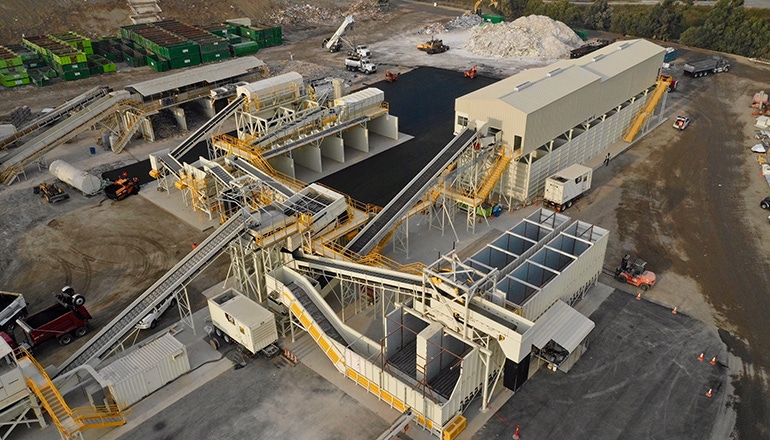Partnering with Plexus Recycling Technologies, Zanker installed the system at its facility in February 2018 to reach its diversion goals.

San Jose, Calif.-based Zanker Recycling’s artificial intelligence (AI) technology-powered robotic waste sorting system is now operational.
Partnering with Plexus Recycling Technologies, distributor of the ZenRobotics ZRR2 AI Robots, Zanker, a privately owned solid waste and recycling company, installed the system at its facility in February 2018 to reach its diversion goals.
“The advantage of deploying AI robotics to recycling differentiates Zanker from our competitors,” said Michael Gross, director of sustainability for Zanker Recycling, in a statement. “Reaching the diversion goals is extremely important to us, which is why we chose Plexus Recycling Technologies as our partner in reaching these goals.”
As Zanker’s previous construction and demolition (C&D) recycling system was coming close to “retirement,” the company contacted Plexus for new solutions, according to Brandon Lapsys, general manager of ML-Environmental, DBA Komptech Americas and Plexus Recycling Technologies.
“The ZenRobotics units have a very fast ROI [return on investment],” he says. “After the Zanker management team visited the first Komptech/ZenRobotics AI-powered C&D recycling system in Austin, Texas, they asked Plexus to design their new system capable of processing 150,000 tons per year.”
Plexus, based in Denver, acts as system integrators for ZenRobotics in the North American markets.
“The ZenRobotics units were fully developed and market ready when Plexus became the North American distributor for ZenRobotics in 2015; however, the Plexus engineers are working hard with the ZenRobotics engineers to continuously improve the hardware and the [AI],” says Lapsys. “We are also developing and designing other systems for the recycling market that will integrate the ZenRobotics units. Besides the C&D market, we are actively pursuing other markets including the single stream and scrap metal recycling markets.”

ZenRobotics has designed and developed both the AI software, called ZENBRAIN, and hardware for the robots to meet the needs of a harsh waste sorting environment.
“The robots are more durable and designed to survive hits and collisions, in contrast to traditional industrial robots,” says Janica Johansson, marketing director at ZenRobotics based in Helsinki, Finland. “Thanks to our experience in waste robotics, we know how robots need to perform with complexity. Our unique AI enables robots to work with real-time information, in contrast to being pre-programmed, in a complex environment.”
The ZenRobotics ZRR2 AI operates 20 hours per day with total system production of 150,000 tons per year. Material feeding is highly automated from the beginning of the process, with the front end operating 50 percent of the time to process inbound material. Two large dosing bunkers store up to 100 tons of material, and the ZenRobotics software controls these along with all equipment downstream.
Johansson says the automation allows for increased productivity.
“You can run the plant nearly 24/7 with constant speed, as robots work continuously without stops. Second, the waste industry needs more sophisticated technologies for improving the purity of end fractions,” she says. “Sensors and AI software allow more versatile sorting capabilities. For example, the robot can be trained to sort specific objects. This gives businesses increased flexibility and opportunity to develop new business opportunities. Finally, AI and digitalization also allow more data about the waste, which helps companies to improve and monitor their operation.”
According to Lapsys, AI technology will improve recycling and purity rates above 85 percent.
“The units can recognize materials humans can’t always recognize—a good example is pressure treated wood. The system can almost operate 24/7, which results in customers buying a more affordable, ‘smaller’ system that can run more hours, increasing the throughput per year,” he says. “[This] results in a typical ROI of less than five years, which further results in more recycling systems in North America. This translates to less material to the landfills or waste incineration plants and less virgin material needed.”
Johansson says the need for smarter, more efficient waste sorting solutions is increasing as the industry faces new, tightening requirements.
“Digital solutions and AI allow companies to gather more information about the waste and their operations. This enables improved optimization and more flexible sorting capabilities as you can change the sorting task on the go,” she says. “… Information and the possibility to sort various new waste fractions provide for new business opportunities. Finally, waste sorting robots can reduce hazardous manual tasks in waste sorting.”
About the Author(s)
You May Also Like


